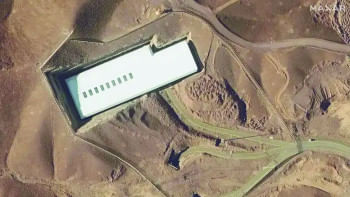Housing solutions for coastal areas of Bangladesh
Housing is one's fundamental right as per our constitution. The scenario of housing in Bangladesh in general is not good. And the state of coastal housing is even worse. The extreme poor in particular are in an especially grave condition.
According to Bangladesh Bureau of Statistics (BBS), the total population in 16 coastal districts amounts to around 34 million (24 percent) over an area of 42,000 square kilometres (29 percent). The population density in coastal areas is around 800 people per square kilometre which is less than the national average. BBS Census 2011 also shows poverty and extreme poverty levels in the coastal areas are 34.65 percent and 20.55 percent against the national average of 31.5 percent and 17.6 percent, respectively. Therefore, the levels of poverty and extreme poverty in 16 coastal districts are respectively 10 percent and 17 percent more than the national average.
Bangladesh is a disaster-prone country. Floods, earthquakes and riverbank erosion are some of the most common hazards that have drastic effects all over the country. The coastal region suffers more due to additional hazards like cyclonic winds, tidal surges and salinity, floods and earthquakes. Again, the east coast suffers from the threat of severe earthquakes and landslides. On the other hand, saline intrusion is much deeper inland along the west coast. Salinity affects the durability of building materials and therefore building structures. Tidal surge and wind from cyclone exert loads on structures which are even more severe than the earthquake load. Therefore, structures in the coastal region demand the use of alternative appropriate materials and technologies for withstanding severe loads emanating from cyclones, tidal surges and earthquakes.
A relevant policy document titled "Standard Guidelines for Rural Housing in Disaster-Prone Areas of Bangladesh," a publication of the Housing and Building Research Institute, dictates eight design standards and proposes shifting from the paradigm of temporary building structures to a durable one. Moreover, the use of wood, bamboo, straw, etc., causes deforestation and destroys coastal green belts which is most important to break the tidal surge and wind thrust during severe cyclones. The eight design standards for rural housing are: 1) Guaranteed security of tenure for a set period of time of at least 30 years; 2) Access to safe water and sanitation solutions is to be provided; 3) All housing is built with materials and techniques that allow easy maintenance, repair and duplication; 4) All housing and sites are adapted to the local hazard profile to resist recurrent disasters over 30 years; 5) All housing offers a comfortable and healthy internal climate; 6) All housing is adapted to special and specific needs of its inhabitants; 7) All housing is functional, culturally appropriate and adaptable; and 8) All housing should be situated as close as possible to employment and education opportunities, medical and other social services.
Considering all these things above, it is obvious that coastal housing needs special care. The following measures are some of the ways in which coastal housing needs can be ensured:
- Conserve agricultural land; it would not be wise to construct single-storey structures.
- Houses should be durable and cyclone and tidal surge resilient.
- Inundation model developed by the Institute of Water Modelling (IWM) should be kept in consideration.
- Wind speed and earthquake zoning map of BNBC need to be consulted during design of structures.
- Presence of embankment and its height need to be considered during design and construction.
- Location, vegetation and distance from sea or river need to be considered.
- All sorts of measures should be taken keeping in mind corrosion of steel and decay of concrete.
- Brick chips should be strictly prohibited in concrete and bricks should be discouraged.
- Conventional Reinforced Concrete (RC) construction with poor quality concrete should be discouraged.
- Ferro-cement technology is the best option for coastal areas.
- Pre-fabricated high strength and low permeability concrete might be a good option.
- Admixture should be made mandatory as an ingredient of Reinforced Concrete.
- Concrete must be durable and minimum compressive strength shall be 4,000 psi.
- Pitched roof is preferable to facilitate discharge of rainwater and to harvest the same.
- Selection of foundation size and depth need careful judgement considering wind and surge.
Mohammad Abu Sadeque is former director, Housing and Building Research Institute (HBRI).

 For all latest news, follow The Daily Star's Google News channel.
For all latest news, follow The Daily Star's Google News channel. 



Comments